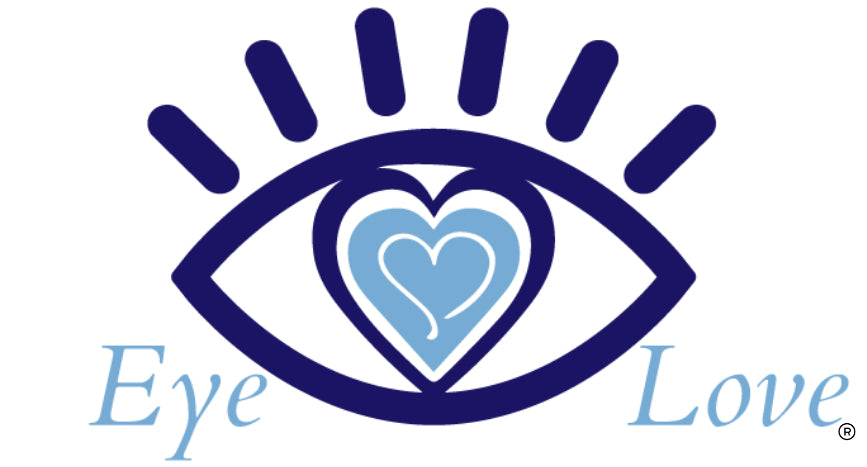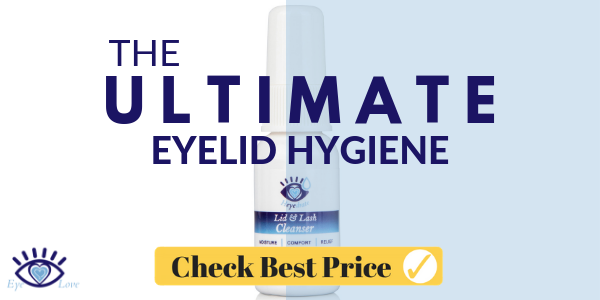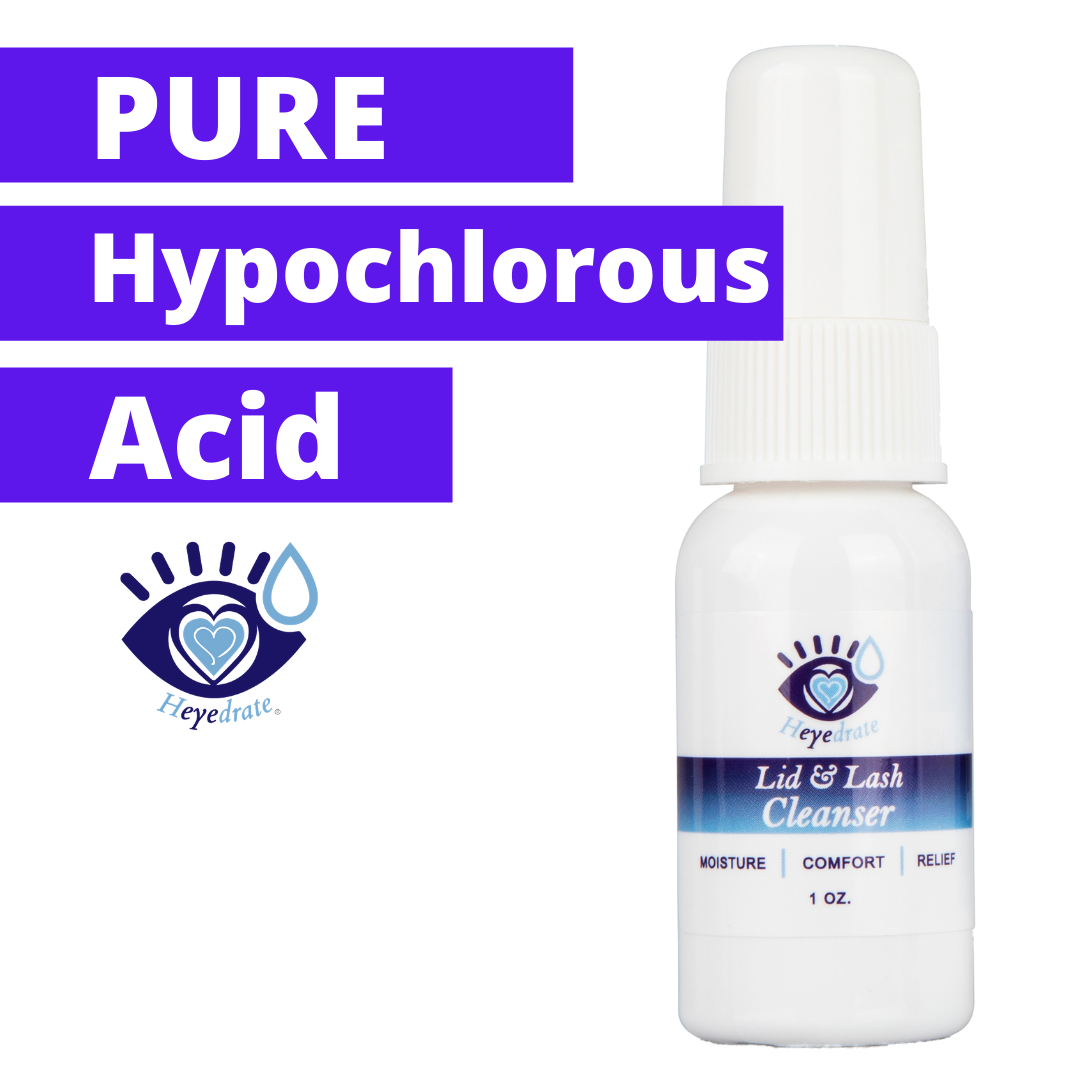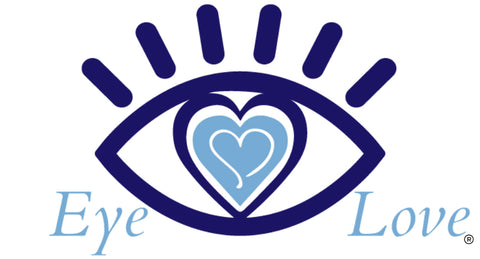19 Inflamed Eyelid Tips, Home Remedies and Other Stats & Facts
Why Do I Have Inflamed Eyelids?
Inflammation of the eyelids often leads to red and swollen eyelids and uncomfortable eyes. It is a very common condition which can occur at any age, however it is more prevalent in elderly individuals. The vast majority encounter flare-ups in symptoms followed by episodes without any major issues. It is not a contagious condition, although bacteria can be spread from person to person.
Eyelid inflammation is mainly associated with the excessive growth of bacteria that live along the eyelids and at the base of the eyelashes. Staph bacteria is the most common culprit. Over time, these bacteria multiply and form a biofilm, which can cause symptoms to develop. You can think of biofilm like a fortress surrounding and protecting the bacteria. Eventually, it will be very difficult to remove the bacteria and biofilm if the condition is not properly treated.
What Are Other Causes of Inflamed Eyelids?
- Sebaceous gland blockage or eyelid dysfunction
- Dandruff of the scalp and eyebrows
- Certain skin conditions
- Demodex mites or lice on the eyelashes
- Entropion, where the eyelids turn in, or ectropion, where the eyelids turn out
- Allergies, including allergic reactions to eye medicines, contact lens solutions or eye makeup
Common Symptoms You May Experience
- Burning eyes
- Crunchy residue at the bottom of the eyelashes
- Flaky eyelashes
- Irritated and watery eyes
- Itchy eyelids
- Grittiness or a foreign body sensation
Depending on the severity, any of these symptoms may occur intermittently or constantly. Other symptoms include:
- Eyelashes matted together upon awakening
- Frothy or bubbly tears
- Swollen or thickened eyelids
- More frequent blinking
- Photosensitivity (light sensitivity)
- Loss of eyelashes
- Misdirected eyelashes
- Dry skin around the eyes
- Frequent, painful eyelid bumps
How to Support Healthy Eyelids and Get Back to Normal
Those with eyelid inflammation are advised to avoid touching their eyes frequently, as this helps bacteria to travel and multiply. It is best to keep good hygiene in mind.
Habits like making use of warm compresses and cleansing the eyelids with a hypochlorous acid eyelid cleanser can be great places to start. Also, wash the face and scalp regularly, making sure to remove any makeup or hair products.
If your condition is more severe, medications such as antibiotics or steroids can be prescribed by your eye doctor. As with any case of inflammation or infection, it's best to pay a visit to your eye doctor for a proper diagnosis and treatment plan.
Eyelid Hygiene
Our number one recommendation for all patients is eyelid hygiene. If you don’t already have a great eyelid hygiene routine, look into starting one as soon as possible. You can read more about Dr. Jenna’s eyelid hygiene routine here. The basics are as follows:
- Remove your makeup with an oil based makeup remover, and wash your face with a tea tree based soap.
- Then, cleanse your eyelids with a hypochlorous acid cleanser. This natural cleanser is simple to use. Simply spray the solution onto a cotton ball and apply it to the base of your eyelashes. Then, let it dry. No need to rinse!
Warm Compress
A warm compress eye mask can be a nice addition to your eyelid hygiene routine. We recommend using it after washing your face, but before using an eyelid cleanser. Warm compresses will help heat up the oil within the meibomian glands, allowing it to flow like olive oil (vs. be stagnant like hardened butter). When done consistently, this can be a great adjunct to your routine. Some people with inflammatory skin conditions may want to alternate warm and cool compresses. Do what works best for you!
NuLids or BlephEx
When we talk about the overabundance of bacteria on our eyelids, we inevitably need to talk about biofilm (which we've discussed a bit already). When bacteria proliferate, they begin to form biofilm. Basically, biofilm creates a fortress around bacteria and allows it to continue to thrive, giving off harmful toxins in the process. The hard thing about biofilm is that simply cleansing your eyelids isn’t going to tackle the whole picture, because it won’t penetrate the biofilm that’s already there. However, there are great ways of doing so!
For home use, the NuLids device (NuSight Medical) is a wonderful tool for removing biofilm from the comfort of your own home. Using disposable tips, this device is simple to use and can remove biofilm in as little as one minute per day. If the thought of doing this yourself scares you, BlephEx is available through many eye doctors’ offices, and it’s a great in-office alternative for removing biofilm. Both devices are great, both companies are great, and we recommend using one or the other.
Green Smoothies
We could discuss green smoothies all day long, diving into the benefits you’ll notice. For nearly everyone we meet, we recommend replacing your current breakfast with a green smoothie. Why is this? Because most people are eating horrible food for breakfast that’s doing nothing but increasing inflammation in your body. Cereal, milk, bacon, pancakes, you name it...all of it can be horrible and contribute to inflammation.
When you replace these foods with a green smoothie, you’re not only ensuring hydration first thing in the morning, but you’re also making sure you’re packing in tons of antioxidants and carotenoids. Both are great for supporting eye health.
Steroid or Antibiotic Eye Drops
As a last resort, and after all of the above alternatives have been tried, steroid eye drops are a great option for knocking down inflammation. We use these when someone is incredibly red, inflamed, and miserable, and they usually work quite well when prescribed and used correctly. Steroid eye drops encompass the entire inflammatory cascade and really knock out inflammation for most people, at least getting them back to a manageable baseline.
I also added topical antibiotics here, although these will usually not be needed unless you're currently suffering from an active infection. If you feel that you have an eye infection, or you're suffering from severe inflammation, speak with your eye doctor today.
How to use Tea Tree Oil for Inflamed Eyelids
Remove your Makeup with a Tea Tree Oil Makeup Remover
It’s amazing that so many people either forget to, or completely ignore that they need to, remove their makeup at night before they go to bed. Makeup is a breeding ground for bacteria, and when it’s left on your eyelids all night you’re just asking for issues. Removing your makeup with an oil-based cleanser means that you’re going to get all of the makeup off (even the waterproof kind!)
We recommend using an oil-based remover that contains tea tree essential oil to support the skin of your eyelids. Simply place 3-5 drops of the remover onto a cotton ball or round and swipe it across your eyelids and lashes, concentrating at the base of the eyelashes until all of the eye makeup is removed.
Wash your Face with Tea Tree Oil Soap
To use, simply lather the soap between your hands for a few seconds and then work it into your skin in circular motions. Keep your eyelids closed tightly! Take care to avoid getting the soap directly into the eyes, as this will burn. Rinse well after you’re finished. You’ll be amazed at how your skin feels after using this soap.
Eyelid Cleansing Wipes with Tea Tree
If you prefer a little extra friction with your eyelid cleansing, consider using an eyelid wipe. Simply remove the pre-moistened eyelid wipe from the package, close your eyes, and wipe the pad over your closed eyelids (concentrating on the lash margin). Most formulas do not require rinsing and can be found with or without tea tree essential oil.
The Impact of Stress
So, what does stress have to do with this? So much. This all comes back to inflammation. Inflammation is at the core of most chronic diseases today, including heart disease, cognitive issues, GI distress, and even eye irritation. Emotional stress can cause hormonal shifts, weight gain, and inflammation.
Stress is your body’s “fight or flight” response, which occurs when you are in a stressful situation. Your nervous system releases hormones that prepare you to fight whatever the offending agent is or to run. This is your body’s short-term response to stress and it recovers quickly from this. This is a survival mechanism in the body and does more good than harm.
Cortisol, or the "stress hormone," is an absolutely essential part of your normal health and function, and it helps control blood sugar levels, regulate metabolism, helps reduce inflammation and control blood pressure, and assists with memory.
However if stress is present and cortisol is elevated chronically, further health problems can arise. This is when we find that some people shift from doing fine to struggling with their health (including with their eyes). Stress pushes them over the edge from manageable to unbearable.
What Causes Stress?
There are so many things that can cause stress in our lives, and even good things can lead to stress (think about getting married!) Here are a few things that can contribute to stress:
- Death
- Disability
- Divorce
- Losing your job
- Being unemployed
- Lack of job satisfaction
- Money issues
- Chronic disease
- Injury (even small)
- Emotional issues (Depression, anxiety, anger, grief)
- Traumatic events
- Natural disasters around your home
- Marriage
- Moving (even across town!)
What to do About Stress
The most important determinant of how your body will handle stressful situations is your attitude during the event. How you react to a particular situation will make a world of difference. Unrealistic expectations can cause a ton of harm, both emotionally and physically for you, so it’s best to not sweat the small stuff (as Richard Carlson would say). But what are a few other things you can do to handle stressful situations as they arise?
Limit Screen Time
I put this one first because it’s often an overlooked cause of stress for your eyes, specifically. Being in front of a computer or other screen all day long means that you’re blinking less frequently. This lack of blinking can eventually lead to the loss of functioning of the meibomian glands, and we know that when we lose those glands, we fall deeper into eye dryness issues.
Devices are essential to our everyday lives, yet they are leading to the higher level of meibomian gland problems that we’re now seeing in younger and younger patients, even children. To combat this, limit your screen time and take visual breaks. Follow the 20-20-20 Rule, which states that every 20 minutes, you should be looking 20 feet away for at least 20 seconds. Even better, get up and do something else (like pushups, squats, or even just go grab a glass of water).
Meditate
What if you could meditate in as short as 10 seconds per day? It’s both possible and beneficial! This simple meditation could decrease stress levels, therefore decreasing your risks of chronic disease.
Meditation does NOT have to be an ultra spiritual, out-of-body experience, and all it takes is you, a comfy spot to sit or lie down, and maybe a meditation/mindfulness app on your phone. We like Insight Timer and Calm.
Gratitude Journaling
This is by far my favorite tip for decreasing stress in your life and setting real expectations. It is as simple as writing down three or more things every day in a paper journal. Keep a paper journal or notebook beside your bed with a pen. Every night before you go to sleep, write anything that happened during that day that you’re grateful for, anything positive that made you smile or that put you in a better mood.
Expressing gratitude on a nightly basis will help you look for positivity in people and the world around you because you are starting to train your brain to do so. Items can be big, such as being thankful for health and a nice home, or small, such as being grateful for the smile on your son’s face in the morning, your hot coffee, or the compliment your boss gave you at work.
Yoga (Especially Yin)
Yin yoga is a slow paced style of yoga with postures, or asanas, that are held for longer periods of time. Usually postures are held for one minute or more, and may be held up to 5 minutes. Not only does yin yoga increase flexibility, but it also improves circulation and gives your body and mind a time to rest.
We love to use yin yoga at night to help us wind down. This allows us to stretch, slow our minds, and get ready for a great sleep ahead. We tend to start our yin yoga practice around 9:00 pm at night and then go to sleep afterwards.
Laugh!
Laughter is truly the best medicine, and we see this time and time again. While laughter will never take away the pain completely, it will shift your mindset into focusing on what’s great in life. Here are just a few of the benefits of laughter: it relaxes your whole body, boosts your immune system, releases endorphins (happy hormones), supports the heart, burns calories, and may even help you live longer. So, put on a comedy with your dog, kids, or significant other, and get laughing!
There are so many other tips I could give on decreasing stress, but the above few are enough to get you started on the road to a healthier you, both physically and mentally. You may not believe that stress reduction techniques can make a difference, but I’ve seen this be the case time and again.
Can Makeup Contribute to Eyelid Issues?
The answer is yes, and this includes your favorite bronzers, eyeliners and lipsticks. Your makeup bag harbors some potentially harmful bacteria, and this was seen in a study conducted at London Metropolitain University. They found six different types of bacteria living on makeup brushes and cosmetic products. In addition to this, the makeup you're using likely contains chemicals that you don't want around your eyes.
When it comes to your eyesight, most eye makeup, especially eyeliner, can cause irritation because it creeps in and blocks the eyelid's meibomian glands, reducing the secretion of oils needed on the surface of the eye. This can cause the tears to evaporate too quickly.
If you want to wear eye makeup more safely, choose better options! You'll do your eyes a favor by avoiding the following ingredients in your cosmetics:
- Alcohol
- Argireline (Acetyl Hexapeptide-3)
- Benzalkonium Chloride (BAK)
- Formaldehyde
- Synthetic prostaglandins
- Parabens
- Phenoxyethanol
- Retinol
- Sodium Laureth Sulfates
- Vitamin A
And although I shouldn't have to say it, make sure you're cleaning your makeup brushes regularly with soap and water and allowing them to dry completely. Also, don't forget to replace your liquid and cream-based makeup products at least every three months.
AMAZON AFFILIATE INFORMATION
We, Eye Love, LLC, are a participant in the Amazon Services LLC Associates Program, an affiliate advertising program designed to provide a means for us to earn fees by linking to Amazon.com and affiliated sites. MediViz and Heyedrate branded products are made by our company, Eye Love, but we truly believe that our products are the best on the market! It is important to know that our products are not intended to diagnose, treat, cure, or prevent any disease.







